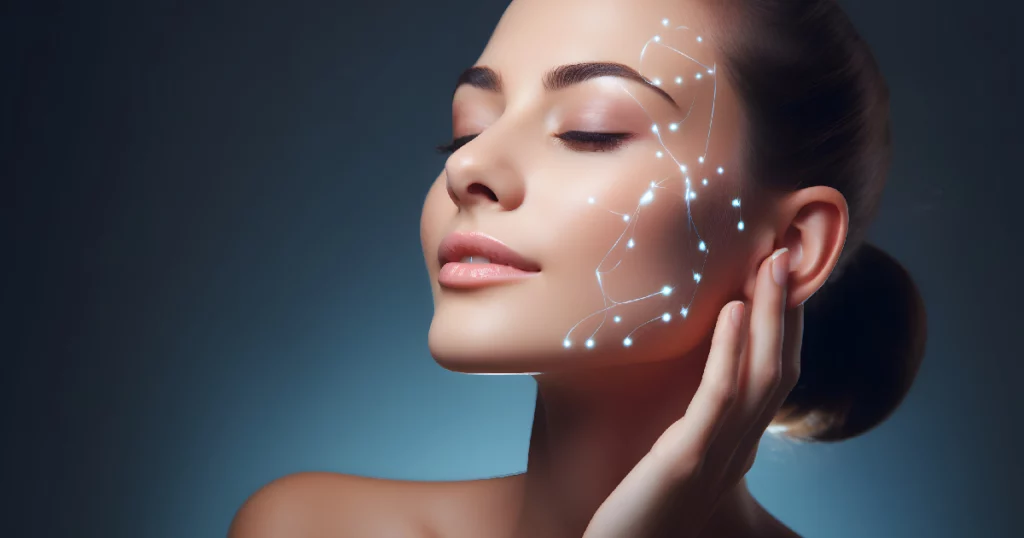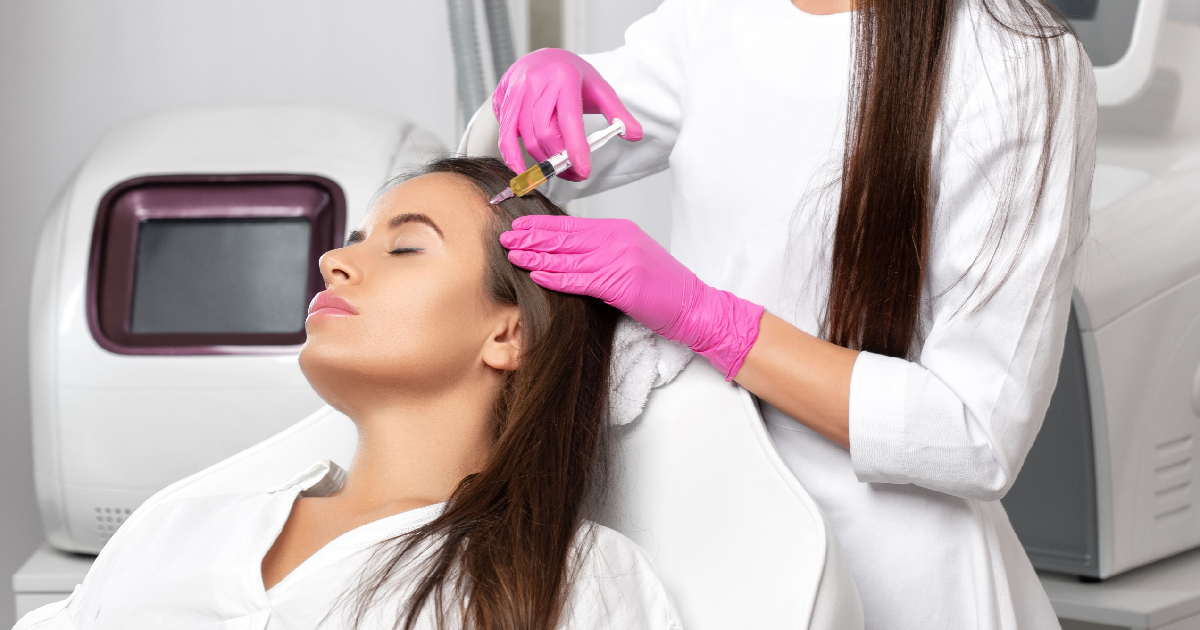Youthfulness and beauty are highly prized, people continually seek ways to maintain a fresh and youthful appearance. One of the most popular methods for achieving this is through cosmetic treatments. Botox has long been a household name in the world of cosmetic enhancements. Still, Dysport is quickly rising to prominence as a formidable competitor in wrinkle-relaxing injections.
Dysport is not just another Botox alternative; it has unique characteristics, advantages, and considerations. If you’re considering Dysport as an option for reducing wrinkles and achieving a smoother, more youthful appearance, this comprehensive guide will help you understand everything you need.
The Basics of Dysport
Dysport is an FDA-approved prescription injection to treat moderate to severe frown lines between the eyebrows. Being a neurotoxin, it acts similarly to Botox by relaxing the muscles that are to blame for wrinkles and lines. The active ingredient in Dysport is abobotulinumtoxinA, a purified protein.
A trained healthcare professional normally administers the minimally invasive procedure. By efficiently reducing muscle activity and smoothing the look of wrinkles, it reduces muscle activity by inhibiting nerve signals in the muscles at the injection site.
Dysport vs. Botox
While Dysport and Botox are similar in many ways, some key differences might make one more suitable for your needs.
- Onset of Action
One notable difference is the speed at which Dysport takes effect. Dysport tends to have a quicker onset of action compared to Botox. Many individuals report seeing results from Dysport within a couple of days, while Botox may take a bit longer, generally up to a week.
- Spreading
Dysport is known to have a wider spread compared to Botox. Depending on the specific area being treated, this can be an advantage or a drawback. It may work well for larger treatment areas but may require careful consideration when targeting smaller, precise regions.
- Unit Conversion
Dysport and Botox are dosed in different units, which can lead to confusion. Working with a skilled injector who understands the unit conversion and can provide the correct dosage for your needs is crucial.
- Duration
The duration of Dysport’s effects can vary from person to person, but it typically lasts around 3 to 4 months, similar to Botox.
- Results
Dysport and Botox can provide excellent results in minimizing wrinkles and fine lines. The choice between the two often comes down to personal preference and the recommendation of your healthcare provider.
The Dysport Treatment Process
Before deciding to undergo a Dysport treatment, it’s essential to understand the entire process. Here’s what you can expect:
- Consultation
The first step is to schedule a consultation with a qualified healthcare provider or cosmetic surgeon. During this consultation, you’ll discuss your goals, the areas you want to target, your medical history, and any concerns you may have. The provider will determine if you’re a suitable candidate for Dysport and answer any questions you might have.
- Treatment Plan
Once you and your provider decide to proceed with Dysport, they will create a personalized treatment plan. This plan will include the specific areas to be treated and the recommended dosage.
- The Procedure
The actual Dysport treatment is relatively quick and straightforward. It involves a series of injections in the targeted areas, typically taking no more than 20-30 minutes. Most clients feel only mild discomfort during the procedure.
- Recovery
The downtime that comes with Dysport is rather small. Following the treatment, you can go back to your regular activities. However, following your provider’s post-treatment care instructions is essential, which may include avoiding strenuous exercise and refraining from rubbing or massaging the treated areas for a few hours.
- Results
As mentioned earlier, Dysport’s effects tend to become noticeable within a few days, with full results developing throughout a couple of weeks. You’ll enjoy a smoother, more youthful appearance, with wrinkles and fine lines significantly reduced.
Who Is a Good Candidate for Dysport?
Dysport is a versatile treatment that can benefit a wide range of individuals. Good candidates for Dysport typically include:
- Adults: Dysport is generally not recommended for individuals under 18.
- Individuals with Wrinkles: If you have moderate to severe frown lines between your eyebrows, Dysport can be an effective solution.
- Healthy Individuals: Candidates should be in good overall health with no serious medical conditions that may contraindicate the treatment.
- Realistic Expectations: Having realistic expectations about the treatment results is crucial. While Dysport can provide a more youthful appearance, it won’t eliminate all facial expressions.
- Not Pregnant or Breastfeeding: It’s best to postpone Dysport until after you’ve finished nursing if you are pregnant or breastfeeding.
- No Allergies: Ensure that you do not have allergies to any of the ingredients in Dysport.
Preparing for Your Dysport Treatment
To ensure the best possible results and minimize potential side effects, it’s essential to prepare for your Dysport treatment:
- Consultation: Attend a thorough consultation with a qualified healthcare provider to discuss your goals and medical history.
- Avoid Certain Medications: Inform your provider of any medications you’re taking, especially blood thinners, as these can increase the risk of bleeding and bruising.
- No Alcohol: For at least 24 hours before the procedure, refrain from drinking alcohol since it may increase the chance of bleeding.
- Stay Hydrated: To lessen the chance of edema, drink plenty of water the days before your treatment.
- Topical Anesthetics: If you’re concerned about pain or discomfort during the procedure, discuss the possibility of using topical anesthetics with your provider.
- Plan Ahead: For the rest of the day after your Dysport treatment, ensure you have the flexibility to relax and refrain from physically demanding activities.
- Avoid Blood Thinners: If your healthcare provider recommends it, avoid taking blood-thinning medications like aspirin and ibuprofen for a few days before the procedure, as they can increase the risk of bleeding and bruising.
- Arnicare Gel: Consider using arnica gel or cream before and after your Dysport treatment. Arnica is a natural remedy that can help reduce swelling and bruising.
- Follow Post-Treatment Care Instructions: Pay close attention to the post-treatment care instructions provided by your healthcare provider. This may include avoiding rubbing or massaging the treated areas, staying upright for a few hours after the procedure, and avoiding exercise on the day of treatment.
Final Thoughts
Dysport is a popular and effective cosmetic treatment that can provide a more youthful and rejuvenated appearance. As you consider Dysport, remember that it’s essential to consult with a skilled and experienced healthcare provider who can assess your unique needs and develop a tailored treatment plan. Always prioritize safety and natural-looking results.
Are you ready to embrace a refreshed and revitalized you? At Bradenton Aesthetics, we’re thrilled to introduce you to the magic of Dysport, your secret to turning back the clock on aging gracefully. Are you ready to discover the incredible transformation Dysport can offer? Please schedule a consultation with Bradenton Aesthetics, and let’s embark on a journey to unlock your timeless beauty. We’ll address your concerns, provide expert guidance, and create a personalized treatment plan.








